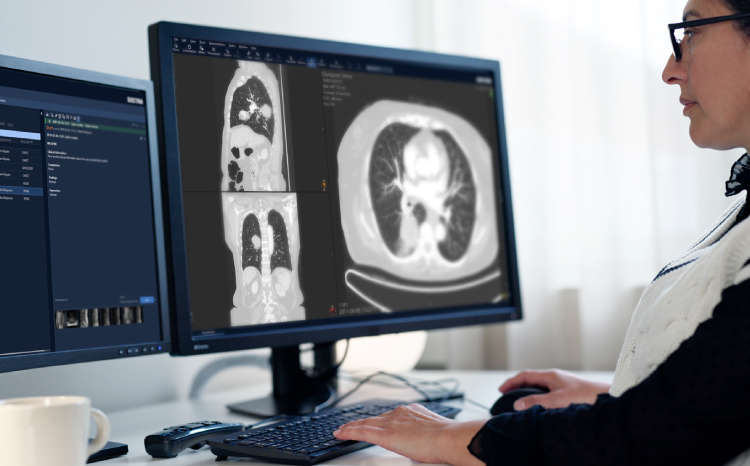College highlights poor PACS image sharing
- 30 March 2009
Picture Archiving and Communication Systems installed in the NHS in England are largely successful in individual hospitals but communication between systems in different hospitals is poor, according to a new position paper from the Royal College of Radiologists.
The paper, prepared by the college’s IT sub-committee, is critical of the National Programme for IT in the NHS’ record on image and report sharing in PACS and radiological information systems.
It says: “When local service providers were appointed to deliver the NPfIT in 2001-02, the contract was for one year of local PACS storage with additional archiving to Central Data Stores at a cost of £35m.
“NHS trusts were led to believe that these CDS would be pivotal to automatic image and report sharing. It subsequently came to light that radiology image and report sharing was not in fact a contractual requirement for LSPs.”
The paper says that trusts with existing systems did not replace their PACS with the LSPs’ solutions when it became clear they did not provide significant additional benefits. This has resulted in a ‘multi-vendor PACS environment’ where, for example, London has 21 trusts with an LSP PACS and 16 with pre-existing systems.
In the absence of automated image and report transfer, the college says time-consuming processes such as DICOM Push, remote web access and the transfer of information on encrypted CDs are required to get access to images and reports generated in other NHS trusts.
The college lists other weaknesses that it sees in the national programme, including a failure to realise the importance of document sharing that integrates radiology reports and images and the lack of a clear, long term strategy for integrating radiology reports and images into the electronic patient record.
In addition to highlighting the information sharing problem, the college has set out its solution. The position paper lays down a set of standards to overcome the problem of automated image and report sharing which include the adoption of the IHE XDS and XDS-I profiles for sharing images and other clinical information.
Embracing this approach would represent quite a radical departure from NPfIT’s CDS model. XDS (Cross-Enterprise Document Sharing) was developed by Integrating the Healthcare Enterprise to provide an internationally agreed and vendor-independent way of sharing general clinical documents.
The design includes a central location called a registry which keeps an index – the equivalent of Google – giving information about where a patient’s data is. Users then retrieve the data from the original store, reducing the need to store the data centrally.
XDS was further developed for imaging, with the help of Canada’s InfoWay project, resulting in XDS for Imaging (XDS-I) which allows access to images indexed in the main XDS registry.
NHS Connecting for Health commented: "We are already aware of the potential of XDSi and have been asking our suppliers to confirm when an XDSi compliant PACS will be available on their commercial roadmaps. Investigations as to how it could be incorporated cost effectively into the PACS estate in England are underway."
More generally, the CFH spokesperson commented: “The national roll-out of Picture Archiving and Communications Systems has been a major success for the NHS with patients benefiting from faster and more accurate diagnosis and treatment. Our focus is now increasingly on improving the sharing of images and reports across trusts to support clinicians in their care for patients.
"We welcome the views of the Royal College of Radiologists as to how best achieve this goal and will continue to work closely with both the radiologists and wider clinical community to realise all the benefits presented by digital imaging and scanning.”
Related article:
Data sharing: the next move for PACS





